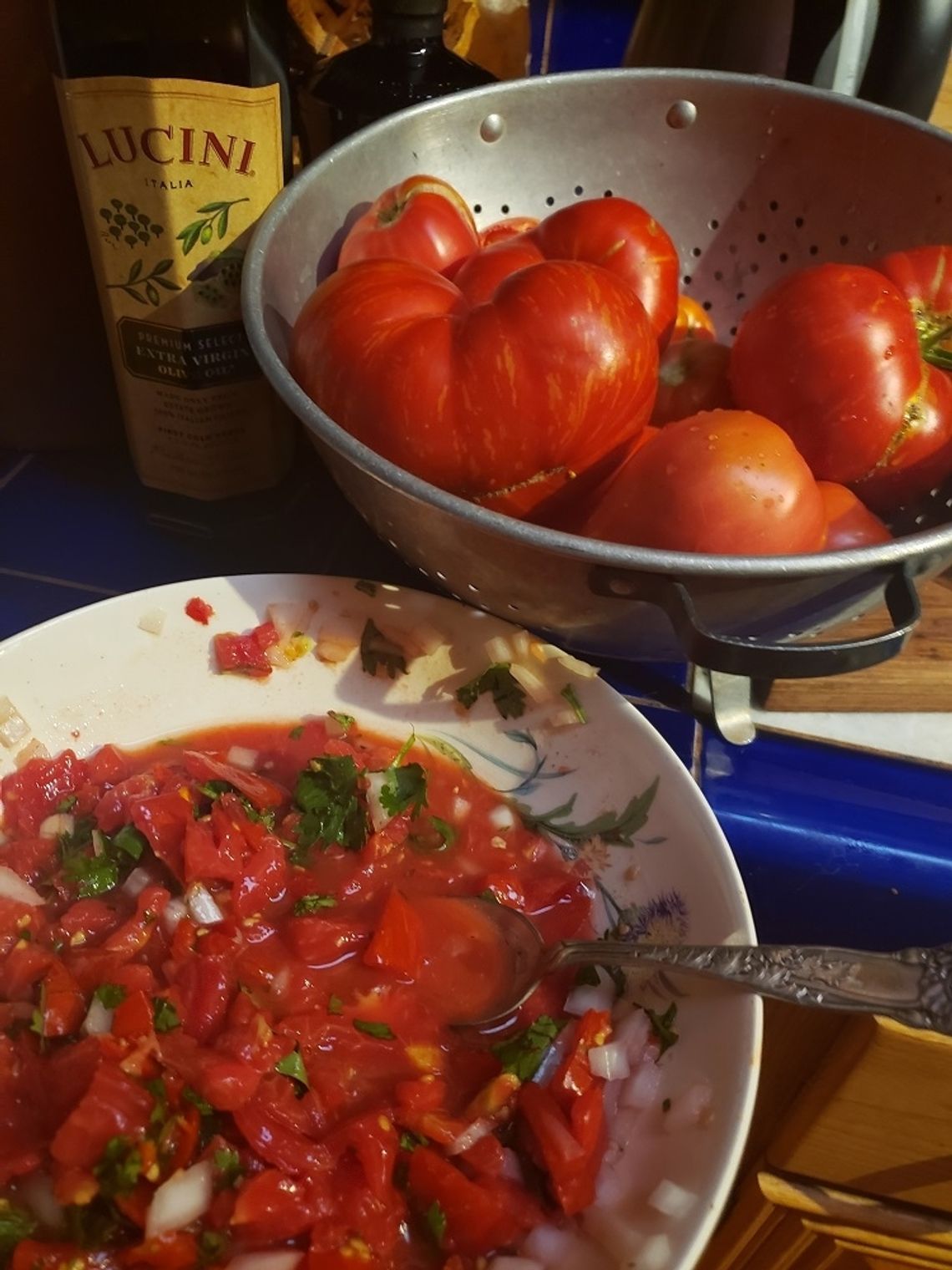Ever bite into a beautiful-looking tomato, anticipating a true taste of summer, a balance of sweet and acidic delightfulness, only to feel let down with the flavor? Looking at your store-bought, mass production tomatoes. The first year we grew tomatoes on a larger scale, we had really great-looking, plump, Black Krim tomatoes. The plants were as tall as Kevin and completely covered in fruit. However, disappointingly, they tasted bland and almost watery. Looking back, I know I killed them with kindness. I absolutely overwatered. I gave bags away to friends who sundried and roasted through many pounds. I should have followed their lead. If you have yet to roast summer tomatoes down with onions, garlic, olive oil, a little salt and pepper, do it. Freeze the results. I am already dreaming of tomato soup in January made with our summer tomatoes, in front of the fireplace with a nice glass of Sauvignon Blanc.
With soaring summer temps and drought always in the conversation, we could learn some lessons from the dry farmers of California and those in the Mediterranean. The idea behind dry farming is by restricting the plant’s water intake, you’ll end up with less water in the fruit and more sugar/flavor compounds. Mediterranean farmers have been using dry farm techniques, especially in olive groves and vineyards, for many generations. In fact, there are laws on the books for some European wine areas that prohibit any supplemental irrigation at all. California dry farmers specialize in almonds and many fruits like melons and, of course, wine grapes. In addition to other deep-rooted crops like tomatoes. True dry-farmed crops are watered only at their initial planting. In my professional, but not very professional, opinion, Fallon is too hot, too dry and we have too much sand to truly dry farm, but I can confidently say, with a little planning we could water less and have good success, especially when it comes to tomatoes.
Dry farmed tomatoes are a chef favorite, specialty crop you can find at farmers markets and spendy grocery stores. They command a much higher price than conventional grown, cardboard flavored tomatoes, for good reason. Watering less is a major component in the success of our local food-growing superstars. If you’ve tasted a Lattin Farms Sungold cherry tomato or a Mewaldt Farmsweet, you’ve tasted the benefits of this practice. Growing tomatoes well anywhere requires some patience and experience. Finding the right amount of water can be challenging. Drip irrigation can help lower your water needs and so can a thick layer of mulch, of course. A little afternoon wilt in the plant is OK – you certainly do not want the plant to collapse but check to see if it perks back up in the cooler evening temperatures. If it does, you are on the right track. It is difficult to unlearn that more water produces better tomatoes, but give it a try. You might benefit from fewer weeds and less disease as well.
Some tomato varieties are more suited to hot, dry conditions. I do not grow them but, I read Early Girls do well dry-farmed, as do the Black Krim I successfully failed with. Nowadays when searching for tomato varieties to grow, I always look for those that are known to be successful in the heat. Often they have Sun in the name, like Sungolds or Solar flares, for example. You also can not go wrong if you purchase seedlings from local growers in the spring.
Reading up on dry farming is a good winter chore with soup and dry-farmed wine. I can also recommend doing your prep work early for next year’s crop. When the season ends, I leave frozen plants up for a month or two and let the birds clear out the remaining fruit. However, if you are working on building your soil you might consider a fall planting of a legume cover crop in the area. We’ve had success with hairy vetch and clovers. You also should rotate your nightshades. Crop rotation of all vegetables really is just a good practice to get into. Add plenty of compost. Tasty tomatoes are heavy feeders.









Comment
Comments